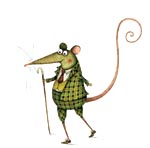Country mouse on Muntjac deer
Muntjac have none of the natural beauty of our native species and their burgeoning numbers need to be controlled - happily they taste delicious, says Mark.


The owls are hooting their hearts out at the moment, but their age-old melody is often punctuated by less-familiar sharp barks. They are relatively new sounds in the countryside, and come from the muntjac deer, which escaped into the wild from Woburn in 1894 and has, in the past decade, seen its numbers explode.
Muntjac are extremely secretive and rarely seen except when flushed on shoots, but they are becoming ubiquitous and have reached the centre of many towns. Originally from South-East Asia, they’ve been described as the ungulate equivalent of the brown rat, which may be a little harsh, but they cause considerable damage to plants and vegetation. Tiny, standing at about the same height as a labrador, muntjac have a hunched appearance and little of the beauty of our native species. They also breed all year round at an alarming rate.
However, their greatest accolade is that they are simply delicious to eat and the meat is ridiculously cheap. The venison tastes sweeter than other native breeds, but has all the lean credentials that make venison so healthy. We would be doing ourselves and the countryside an enormous favour if we ate more of them. Your butcher should be able to oblige.
Exquisite houses, the beauty of Nature, and how to get the most from your life, straight to your inbox.
Country Life is unlike any other magazine: the only glossy weekly on the newsstand and the only magazine that has been guest-edited by His Majesty The King not once, but twice. It is a celebration of modern rural life and all its diverse joys and pleasures — that was first published in Queen Victoria's Diamond Jubilee year. Our eclectic mixture of witty and informative content — from the most up-to-date property news and commentary and a coveted glimpse inside some of the UK's best houses and gardens, to gardening, the arts and interior design, written by experts in their field — still cannot be found in print or online, anywhere else.
